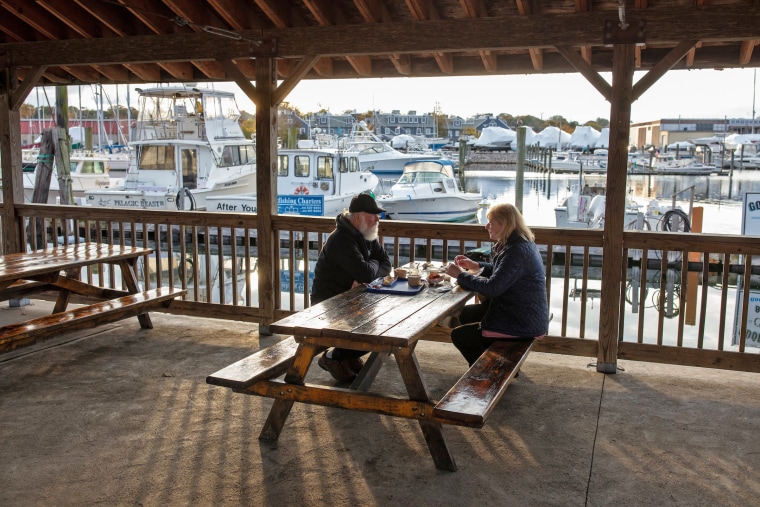NEW LONDON, Conn. — When Connecticut locked down in March, Sean Murray had hundreds of gallons of beer and no one to drink it.
Between the restaurant and the dive bar he managed in the city's downtown, Murray has 70 draft lines.
"We lost about $15,000 in beer alone," he said. Bottles of beer and wine can sit, but the kegs, Murray said, "were all kaput."
The Social, the gastropub where Murray works, reopened in September with outdoor picnic tables and socially distanced indoor dining at less than half-capacity. The restaurant happened to already have industrial-size exhaust fans and an advanced heating and cooling system that filters large amounts of fresh air into the building.
Full coverage of the coronavirus outbreak
The space, a former office supply store, is 5,000 square feet and used to have a capacity of 252 people, so there's plenty of room to keep tables more than 6 feet apart. Customers have told Murray they feel safe there.
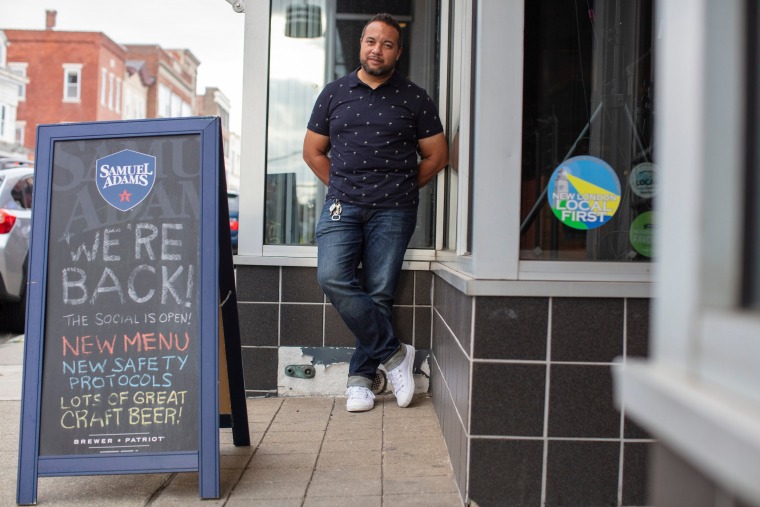
Oasis, the bar he manages, remains closed because it is small and poorly ventilated.
If the state locks down again, "it could cost us the business," Murray said.
There is no plan for a second lockdown, but New London, like the rest of Connecticut and much of the country, is trending in the wrong direction. From Sept. 20 to Oct. 3, the city recorded at least 115 new cases of Covid-19, leading the state Public Health Department and Gov. Ned Lamont to declare it a "red zone." Soon after, Lamont gave the city the option: stay in phase 3, which allows restaurants to stay at 75 percent capacity for indoor dining, or revert to phase 2, which allows 50 percent.
New London Mayor Michael Passero chose to stay in phase 3, saying the difference wouldn't stop community spread, which contact tracing in the area showed was mostly the result of youth sports and family gatherings, not restaurants that reopened.
"People aren't going out to dinner, but they're going to have their neighbor over and get Covid from that," he said.
The choice to keep dining at 75 percent, Passero said, was also about perception, especially when most restaurants couldn't get even that many customers to show up.
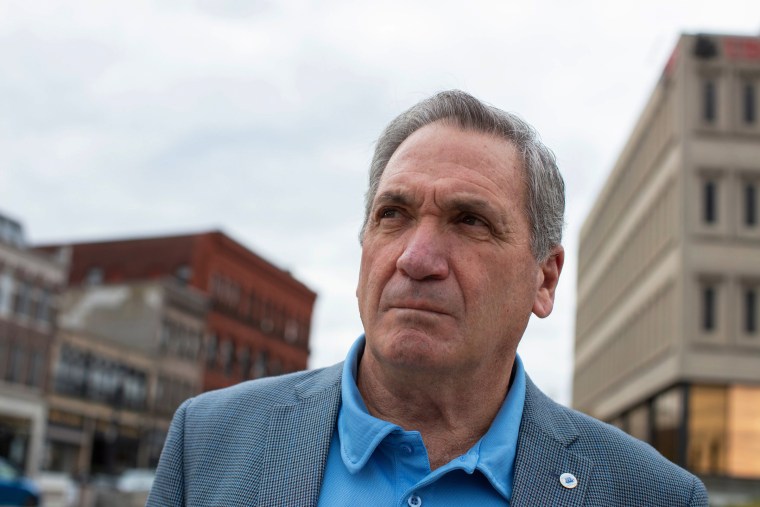
"When the state made a big, public to-do about our cases, we were already aware," Passero said. "We were watching it rise. We were already working on the problem and trying to adjust."
The balance Passero is trying to strike — keeping his community safe and local businesses alive while not spreading panic — has proven to be a difficult and a universal one, as towns and cities across the colder regions of the United States stare down a fast-approaching winter and surging virus case numbers.
Some towns and restaurants are trying to get diners back with flashy gimmicks. Restaurant owners want to turn coastal Portsmouth, New Hampshire, into a "winter ski village" to court patrons. In Telluride, Colorado, refurbished gondola cars will serve as dining cabins to deal with indoor occupancy constraints. Elsewhere, indoor dining has shut down a second time. On Tuesday, Illinois Gov. J.B. Pritzker banned indoor dining in Chicago, citing surging case numbers.
In New London, which sits on the Thames River and Long Island Sound and has winters "not fit for man or beast," most just want to make it to spring, Passero said.
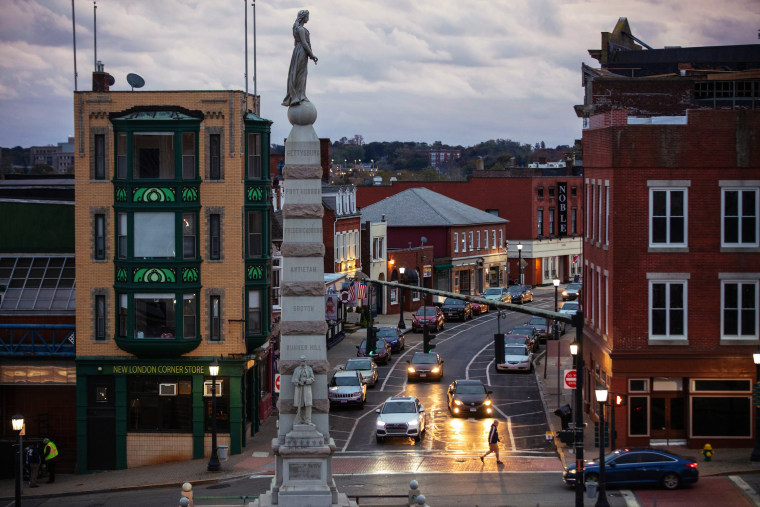
Shrinking clientele
When New London was put in the red zone, the cancellations at On The Waterfront immediately poured in.
The seafood restaurant in the town's marina was just starting to get its groove back after a difficult spring and summer, but people told father and son Stash and Anthony Schiavone, who own and operate it, that they were avoiding New London at all costs.
In their efforts to safely reopen, the Schiavones went beyond state mandates: turning "six top" seating configurations into four tops and four tops into two tops, installing plexiglass, moving to electronic menus and reducing capacity to 50 percent, even though they're allowed to be at 75 percent.
There's demand for their small outdoor space but less for indoor seating.
As the cold looms and case numbers spike, Stash Schiavone, who has been in the business for 40 years, is taking money from his retirement savings to keep the lights on.
"I'm going to church more," he said of his preparations for the winter months.
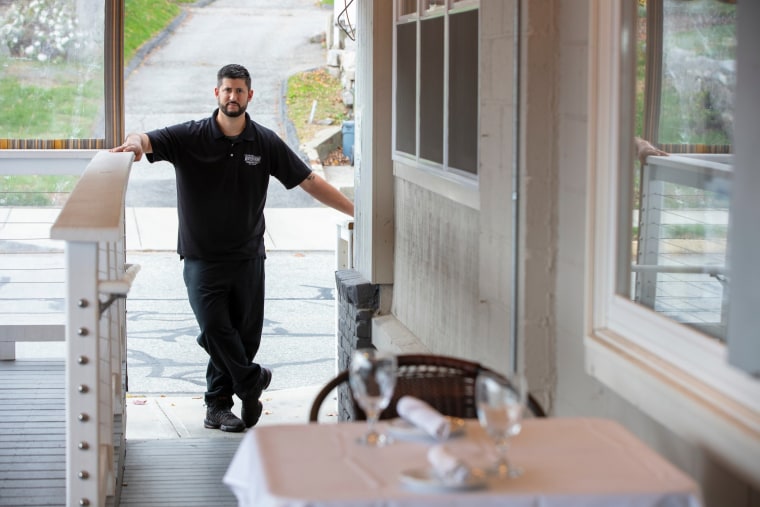
Over at Tony D's, an Italian restaurant run by Anthony D'Angelo, a brutal six months of business have led to a course correction. The restaurant's location, on the corner of a busy intersection that has a narrow sidewalk, made outdoor dining almost impossible, and indoor dining isn't garnering enough business.
D'Angelo is still running the restaurant, but he opened a pasta shop next door that sells fresh ravioli and various kinds of noodles to supplement his business' income. It's an additional investment but one he hopes will get him through as people turn more to takeout.
The restaurant industry, in Connecticut and across the country, has been suffering since March. The food service industry is on track to lose $240 billion in revenue this year. In an industry that accounts for around 2.3 million jobs, 1 in 6 restaurants (or about 100,000) have closed permanently or long term, and 40 percent of operators don't expect to make it through February without more federal relief, according to the National Restaurant Association.
Although Murray considers himself one of the lucky ones, he said The Social's customer base just isn't what it used to be.
The lunch and after-work drinks crowd that used to fill tables from the nearby U.S. Coast Guard Academy and the General Dynamics Electric Boat facility have dried up. In addition, a lot of people are out of work and less inclined to splurge on a nice meal. It has made it harder to fill the dining room, even at half-capacity.
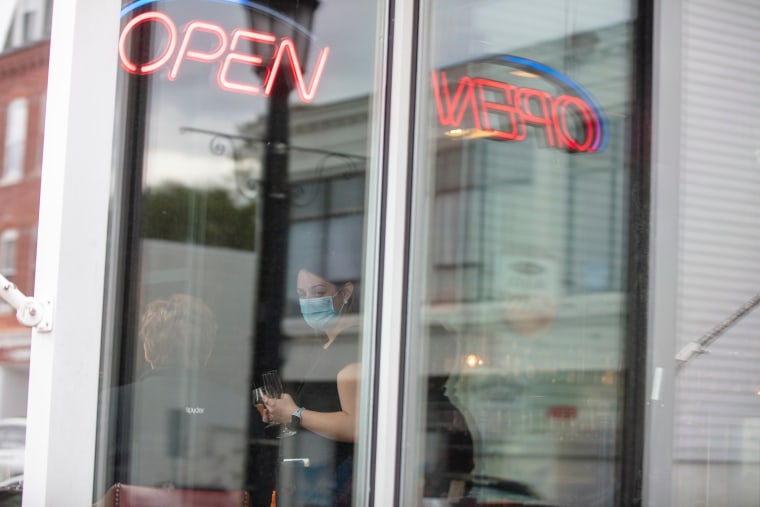
A long winter ahead
Before Covid-19, Ahbra LaManque worked as a part-time server. Now, she won't step foot in a restaurant.
"I've not dined, God, no," LaManque, 44, who lives in New London, said when asked about her pandemic habits. "I've had pizza on a picnic table. That's it."
LaManque also works as a massage therapist, and she needs to stay healthy so she can see clients. The red zone designation hurt her financially, too.
"I was finally doing well," she said while on a walk with her kids and their dog at Fort Trumbull State Park in New London. "Then the cancellations started to flood in."
Niki Batista, who lives in Groton, right across the river from New London, has no plans to patronize a restaurant any time soon, either.
"I don't go out," she said.
Batista, 35, who has young children, said she is focused on work, family and staying safe. She didn't know cases were spiking in New London, but she said it wouldn't make much difference to her, because she is avoiding risk and doing only outdoor activities, like visiting parks.
Her 6-year old is in hybrid school, an experience she described as "horrible" for both of them. She goes into the office five times a week, but her child is in school far less often. She worries about keeping her children entertained as it gets cold.
"Where can I bring a 6-year-old in the winter?" she asked.
At Captain Scott's Lobster Dock in New London, where dining is counter service and outdoors, Andrea Stewart was eating with two friends at a picnic table on a warm October night, but she said her days at restaurants are likely to be numbered.
Stewart, 50, of nearby Waterford, said she ate inside once earlier in the summer but doesn't want to dine indoors again. "It was open air and pretty empty," she said. The tents and pods that restaurants are putting up to make outdoor dining winterproof don't make sense to her, seeming to only trap the virus in more.
Stewart is "podding" with the friends she's dining with, all empty nesters. They trust one another and said that when it gets cold, they'll probably get takeout and eat in one another's homes.
Restaurants in New London know they need to get people like LaManque, Batista and Stewart inside if they want to stay alive this winter, but they also know they can't do much to change how people feel.
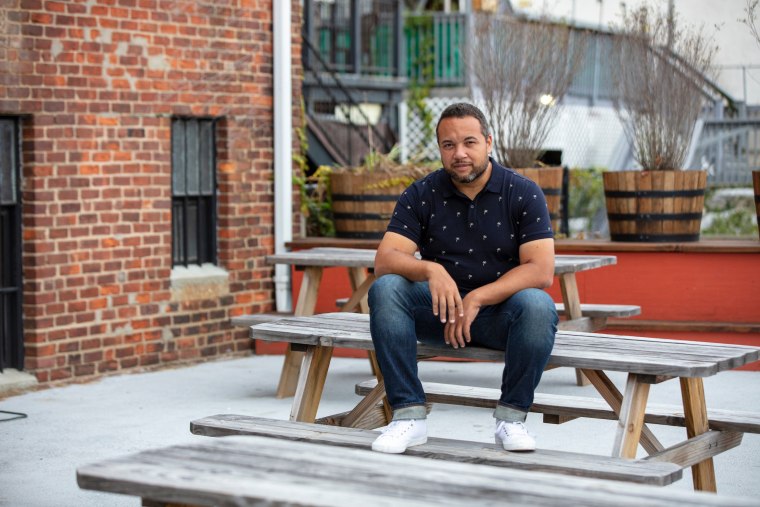
At the end of the day, Murray said, whatever sanitation theater you do or extra precautions you take don't seem to move the needle.
When Connecticut re-entered phase 2 in June, which allowed indoor dining, The Social stayed closed.
"People's comfortability level wasn't there," Murray said. "Patios were still empty."
His goal for winter is simple: "not to get shut down again."
